I think more fans are accepting of the designated hitter coming to the National League for 2022, but there will be a large percentage of holdouts who cringe at the very mention of the term “DH.”
This issue reminds me of a debate about religion or politics, and it’s difficult to have a meaningful discussion because people tend to lose their minds over it.
Having grown up in American League town (Baltimore) I was 14 years old when the DH was installed in the AL in 1973. The Orioles acquired Tommy Davis from the Cubs to plug him in at DH, and in ‘73 he batted .306 with 89 RBI. His 107 OPS+ made Davis seven percent above league average offensively, which wasn’t wow-factor stuff. But Davis batted .151 points higher in 1973 than the Orioles’ pitchers hit in 1972. He drove in 64 more runs than the O’s pitchers did in ‘72, and did so while hitting only seven homers for the season. The value of Davis was his ability to get on base (.341 OBP) to set up runs, and his knack for timely hitting that made him an imposing RBI man. In 1972, Orioles pitchers drove in 25 runs; in 1973 the team’s DHs knocked in 97. And I was very happy with that.
The top three Baltimore starting pitchers in ‘73 – Jim Palmer, Mike Cuellar and Dave McNally – were very good, and I was more than content to watch them pitch without worrying about the possibility of injuries while swinging the bat or running the bases. And I wanted to see them go all the way in their starts instead of being lifted for a pinch hitter in the pre-DH days. Starting pitching was a distinct and potent advantage for Earl Weaver’s Baltimore teams, and I preferred to keep it that way. That’s another reason why I was pleased with the DH.
I savored the chance to see Hank Aaron, Tony Oliva, Rico Carty and Orlando Cepeda come into Memorial Stadium as the DH for visiting teams. All were on the downside of their careers, but that didn’t lessen my joy of having a chance to buy a good seat and see them swing the bat. Without the DH, I never would have seen the immortal Mr. Aaron play in person unless I found a way to get to Philadelphia. And me being under the driving age, that wasn’t easy.
Beginning in 1985, I was grateful to live in a National League market, and I was entertained by the NL style of play. And I moved here at the right time – the time of Whitey Herzog – and the blazing speed, the spectacular defense and the men in motion was must-see baseball. And it was thrilling.
That was a special place in time, and few managers in MLB history could spin the baseball-strategy roulette wheel like Whitey. But Whiteyball was unique, and ensuing versions of NL ball weren’t as exciting in a way that would make me start cursing the possibility of a DH in the NL.
DH or no DH, it didn’t matter to me much. Having been greatly exposed to AL and NL ball, I found that either style of baseball was fine with me, and I could find appealing aspects of DH games, and non-DH games. This was not a line-in-the-sand issue for me, and it was not a purity test for me. I’ve been DH-ambivalent for a long time.
I know many of you are probably ticked off by the coming change. With all due respect, I think a lot of this has to do with the desire to see baseball as it used to be, but that game is long gone and won’t be coming back. For a long time the NL has been the only major-level baseball league in the world to use the old-world rules on a full-time basis, without a DH.
The difference in the rules has led to an advantage for American League teams in World Series competition starting in 1973. Since that time, NL teams have a .388 winning percentage in World Series games played in AL parks, and AL teams have a .445 winning percentage in NL parks. See: Cardinals vs. Red Sox, and Big Papi, 2013.
There was a time when pitchers could hold their own at the plate, relatively speaking. (And even that’s stretching it.)
As a contingent MLB pitchers haven’t batted .150 or better in a full MLB season since 1993.
During the 2021 season – ugh! — pitchers batted .110 with a strikeout rate of 44.8 percent.
With runners in scoring position last season, pitchers hit .095.
In any at-bat that had a two-strike count, pitchers struck out 68 percent of the time.
I’m pretty sure about this: the peoples that holler the loudest in their anti-DH fervor are also caterwauling about the lack of offense and the boring lack of action in a slow-moving game. It doesn’t make sense.
Back to the main point …
Why would we expect pitchers to hit at a respectable level?
1) Since the late 1980s, pitchers haven’t hit in Double A or Triple A unless the game features two National League affiliates. (Unless, only in Double A, the two teams agree to use the DH in the game.) Bottom line: compared to the olden days, pitchers are short on hitting experience when they reach the majors. And once they reach the majors, hitting isn’t a priority. They just don’t spend much time working on their swings.
2) Pitching has evolved. There’s an abundant supply of arms that can bring vicious velocities into the competition – one after another in the march from the bullpen. The cutter is a relatively new pitch that’s used frequently, and pitchers can use it to work the edges of the plate, and to get inside on hitters for jam shots. MLB offense has gone down, down, down. Contact rates have gone down, down, down. And that applies even to the guys being paid to hit. By comparison, pitchers that hit in present-day circumstances are easy targets that have little chance to prevail at the plate.
3) Even at their historical best, pitchers didn’t make much of a mark with a bat in their hands. Since 1900 pitchers as a group have batted .200 or higher in a season only 12 times. The last time that happened in a season was 1929, when pitchers hit .201, and that average has receded through the decades. Since the start of the 2018 season pitchers have batted .118 with a 43 percent strikeout rate, .151 OBP, and a .152 slug. This isn’t entertainment or a competition. Turkeys have more of a chance in the weeks before Thanksgiving than the pitchers who step into a batter’s box.
4) As my friend the baseball analyst Joe Sheehan pointed out, no MLB pitcher with at least 300 plate appearances has finished his career as a league-average hitter (based on OPS+) since Wes Ferrell, and his career ended in 1941. In the expansion era only one pitcher, Ken Brett, finished with a career OPS+ that put him within 20 percent of the league average. Dontrelle Willis was a good hitter as pitchers go, but ended his career at 25 percent below league average as a hitter. But what about Madison Bumgarner? He can hit, and he’s still going. Yes, and 13 seasons into his MLB career, Bumgarner has a 44 OPS+ that puts him 56 percent below league average. Other current pitchers of note: Zack Greinke is 40% below league average offensively, and Adam Wainwright is 63% below average.
5) Even without the DH, National League pitchers aren’t heavily involved on the offensive side of the game. In 1972, NL pitchers accounted for 7.4% of the NL’s total plate appearances. In 2021, that figure was down to 4.8%. Starting pitchers don’t go deep into games and a five-inning start is the average. Relievers don’t get many swings. NL pitchers are hitting fewer times than ever before – and the less they hit, the more helpless they are with a bat in their hands. And this trend won’t change by keeping the DH out of the NL. Pitchers at the plate are being overpowered at a ridiculous level, and it’s terrible for a game that’s already starving for offense and action. I’m sorry my friends; we can’t bring back 1953, or whatever.
6) NL managers used pinch-hitters for 4,438 plate appearances in 2021, the most in a season since at least 2002. And that’s at a time when MLB rosters are overloaded with pitchers, leaving them competing with short benches. If we want more offense, I’d rather see more pinch-hitters available for money-time moves in high-leverage situations. With fewer pinch-hitters on the bench, why waste one because the manager has been waiting for his pitcher to come up so he can remove him from the game? And for those who will hate to see the double-switch go away … it’s already going away. Double-switches began to disappear as soon as multi-inning relievers became one-inning relievers.
7) As for pitching, more than anything the strategy consists of plotting out a script for the starter and assigning specific innings to relievers. The process is methodical and rarely spontaneous. For those who bemoan the loss of managerial strategy decisions in the NL because of the DH – well, the strategy calls will still be there but in a different form: platoon-split advantages and other matchup considerations that have nothing to do with the invasion of the DH. Mostly it will be about replacing one reliever with another, then another, then another, and another.
Finally, I’m going to cite something written by Joe Sheehan in 2018. It still holds true now – more than ever.
“The ‘nine-man game’ argument has been mooted by the evolution of pitcher usage, “Sheehan wrote. “We have this enormous class of players for whom hitting is just not something they do … some of the highest-paid players in baseball have the most narrowly-defined jobs. In nine seasons, Aroldis Chapman has two career plate appearances and 49 career defensive chances. Forget hitting; some of these guys aren’t even asked to field a ball more than once a month.
“If you accept one-inning relief pitchers as baseball players, which the game clearly does, then you have to accept designated hitters as well. They’re two sides of the same coin. Three hundred eighty-one men pitched in the National League last season (2017). More than a third of them never batted. More than half of them batted twice or less. Without a rule change, without controversy, without exobytes of arguments, the “designated pitcher” came into being over the last quarter-century. Isn’t it time we let that inform the DH discussion?”
Joe is 100 percent right about this.
Pitching has become so specialized, MLB makes extensive use of designated pitchers – mostly relievers that have a specific duty for a specific situation and rarely work more than an inning at a time. They’re specialists. They aren’t asked to hit. They aren’t utilized for their fielding. They aren’t on the club to steal bases.
Maybe they’ll drop down a sac bunt now and then, but the sacrifice bunt is slowly fading. In 2009, MLB pitchers delivered 671 sac bunts. Last season, there were only 421 sac bunts. Bunts are dull and predictable, anyway. And does anyone really get their blood flowing when a manager intentionally walks a No. 8 hitter to pitch to a defenseless pitcher? Great fun.
Most of these highly specialized relievers hunt strikeouts and others entice ground balls. They aren’t nine-inning ballplayers who bring a complete set of skills to the job. And there’s nothing wrong with that. We just accept them for what they are — specialists. That’s what confuses me about the DH argument.
If you flat-out dismiss the DH as a one-dimensional specialist that violates the tradition of the nine-man game, then what’s up with the double standards in play as you accept dozens and dozens of one-dimensional specialist relievers? What’s the difference?
There’s a hard line of separation in today’s game: teams invest small fortunes in pitching. They want good pitching. They need good pitching. They need a deep supply of pitching. None of the salaries being paid to pitchers contain one dollar invested with the pitcher’s hitting in mind.
So why do we continue to insist that pitchers hit?
It doesn’t help the team. It doesn’t help the pitcher, it doesn’t enhance offense. And we’ve seen pitchers hurt and miss considerable time – including Wainwright in 2015 – while swinging and/or running.
What, exactly is the benefit?
“Pitcher batting has become a joke, with pitchers more overmatched at the plate than ever before,” Sheehan wrote. “The evolution of pitcher usage is such that pitchers are asked to bat less than they ever have. Most pitchers, even in the National League, rarely bat, and a significant number of them never do.
“We’ve opened the Hall of Fame to players, full-career National League players, who almost never batted, a trend that will surely continue. The argument that baseball purity demands complete players, a nine-man game, is forever lost.”
Preach.
The anti-DH dissidents need to understand that simple, elementary truth. They are freshly mourning the loss of something that was lost decades ago. It would help them adjust to this strange, new world that is anything but a strange or new world. The DH has been part of the game for nearly a half-century.
Thanks for reading …
–Bernie
Bernie invites you to listen to his opinionated sports-talk show on 590-AM The Fan, KFNS. It airs Monday through Thursday from 3-6 p.m. and Friday from 4-6 p.m. You can listen by streaming online or by downloading the “Bernie Show” podcast at 590thefan.com — the 590 app works great and is available in your preferred app store.
Follow Bernie on Twitter @miklasz
All stats used here are sourced from FanGraphs, Baseball Reference, Stathead, Bill James Online, Fielding Bible, Baseball Savant and Brooks Baseball Net unless otherwise noted.
For the last 36 years Bernie Miklasz has entertained, enlightened, and connected with generations of St. Louis sports fans.
While best known for his voice as the lead sports columnist at the Post-Dispatch for 26 years, Bernie has also written for The Athletic, Dallas Morning News and Baltimore News American. A 2023 inductee into the Missouri Sports Hall of Fame, Bernie has hosted radio shows in St. Louis, Dallas, Baltimore and Washington D.C.
Bernie, his wife Kirsten and their cats reside in the Skinker-DeBaliviere neighborhood of St. Louis.



